Paul Raud
- Machine translation, like DeepL or Google Translate, is a useful starting point for translations, but translators must revise errors as necessary and confirm that the translation is accurate, rather than simply copy-pasting machine-translated text into the English Wikipedia.
- Do not translate text that appears unreliable or low-quality. If possible, verify the text with references provided in the foreign-language article.
- You must provide copyright attribution in the edit summary accompanying your translation by providing an interlanguage link to the source of your translation. A model attribution edit summary is
Content in this edit is translated from the existing Estonian Wikipedia article at [[:et:Paul Raud]]; see its history for attribution. - You may also add the template
{{Translated|et|Paul Raud}}to the talk page. - For more guidance, see Wikipedia:Translation.
Paul Raud | |
|---|---|
 Paul Raud, c. 1910 | |
| Born | (1865-10-22)October 22, 1865 Kirikuküla, present-day Estonia |
| Died | November 22, 1930(1930-11-22) (aged 65) Tallinn, Estonia |
| Nationality (legal) | Estonian |
| Education | Kunstakademie Düsseldorf |
| Movement | Realism, Impressionism |
| Relatives | Kristjan Raud (twin brother) |
Paul Raud (22 October [O.S. 10 October] 1865 in Kirikuküla, Viru-Jaagupi Parish – 22 November 1930 in Tallinn) was an Estonian painter.
Life and works
The twin brother of painter Kristjan Raud, he studied at the Kunstakademie Düsseldorf beginning in 1886, becoming influenced by the work of Eduard von Gebhardt. He is associated with the Düsseldorf school of painting.
After his return to Estonia, he painted mainly portrait commissions for some time, before traveling with his brother and Amandus Adamson to the islands of Muhu and Pakri in 1896. His works of this period are reminiscent of those of Max Liebermann.
In 1899 he returned to work in Germany, taking on some of the stylistic trappings of Impressionism; this, coupled with time spent working with Ilya Repin, influenced his later style. Later in his career, most especially during and after World War I, he began to teach, from 1915 working as a drawing instructor at the Tallinn Institute of Commerce and from 1923 at the State School of Industrial Art in Tallinn.
Paul Raud is represented with works in the Art Museum of Estonia, Tallinn.
Gallery
-
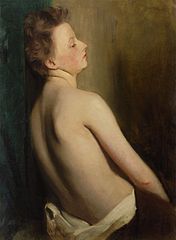 Semi-nude (1893)
Semi-nude (1893) -
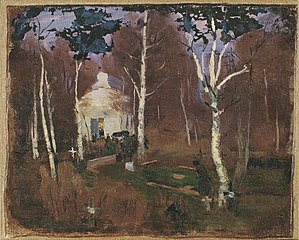 At the Rakvere Cemetery (1895)
At the Rakvere Cemetery (1895) -
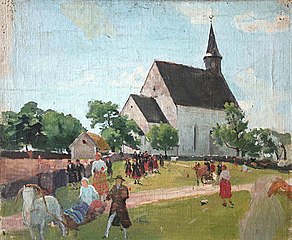 Muhu Church (1898)
Muhu Church (1898) -
 Self-Portrait with a Hat (1900)
Self-Portrait with a Hat (1900) -
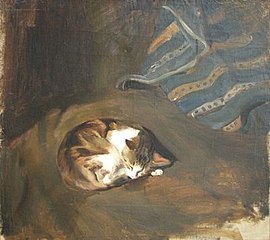 Sleeping cat (1908)
Sleeping cat (1908) -
 A Road in a Park (1910)
A Road in a Park (1910) -
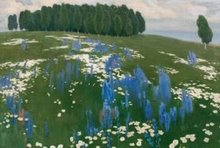 Field of flowers (1906–1911)
Field of flowers (1906–1911) -
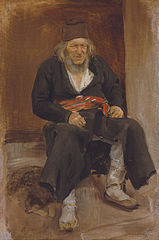 An Old Man from Muhu Island (1911)
An Old Man from Muhu Island (1911) -
 Half Nude (1911)
Half Nude (1911) -
 Man in Military Uniform (c. 1911)
Man in Military Uniform (c. 1911) -
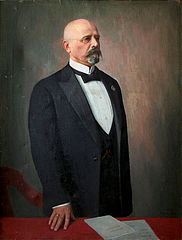 Portrait of Jaan Poska (1929)
Portrait of Jaan Poska (1929)
External links

- "From one Century to the Next: Exhibition of works by Kristjan and Paul Raud in Kumu Art Museum June 22–October 8, 2006[permanent dead link], information folder from the Art Museum of Estonia
- Works by Paul Raud at the Art Museum of Estonia
References
- Biography from answers.com
- v
- t
- e





















